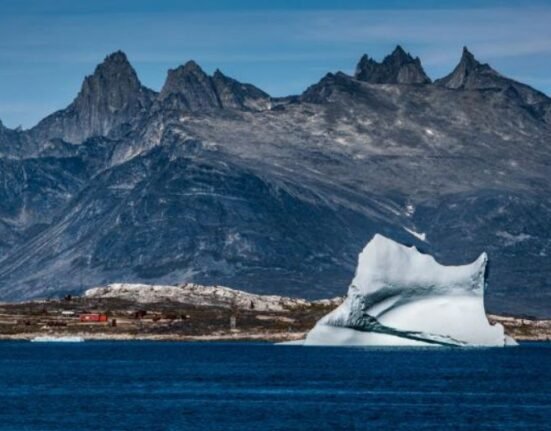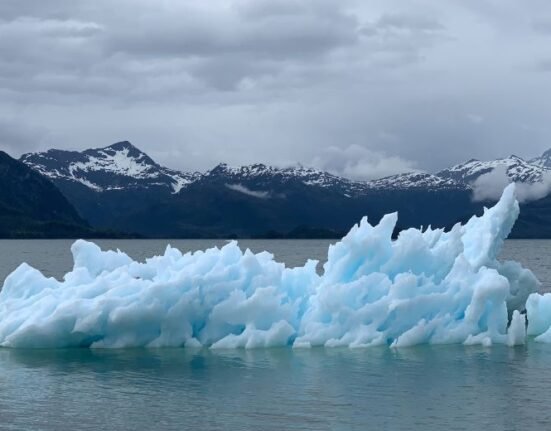HQ Team
January 26, 2023: For ten years leading up to 2011, central-north Greenland warmed the most when compared to the past 1,000 years, a study found.
The region is now 1.5 degree Celsius warmer than during the 20th century, according to researchers led by the Alfred Wegener Institute. The findings were reported in the journal Nature and reprinted in Science Daily.
“The time series, we have recovered from ice cores now continuously covers more than 1,000 years, from 1000 to 2011,” said Alfred Wegener Institute (AWI) glaciologist Dr Maria Hörhold, lead author of the study.
“This data shows that the warming from 2001 to 2011 differs from natural variations during the past 1,000 years. Although grimly expected in the light of global warming, we were surprised by how evident this difference was,” she said.
Together with researchers from AWI and the University of Copenhagen’s Niels Bohr Institute, she analyzed the isotope composition in shallow ice cores gathered in central-north Greenland during dedicated AWI expeditions.
Climate variability
The Greenland Ice Sheet stores about 3 million cubic kilometres of water.
When ice melts, the sea levels rise, and this s projected to contribute up to 50 centimetres to the global mean sea level by 2100.
Weather stations along the coast have been recording rising temperatures for many years. But the influence of global warming on the up to 3,000 m elevated parts of the ice sheet has remained unclear due to the lack of long-term observations.
Experts from the Alfred Wegener Institute and Helmholtz Centre for Polar and Marine Research have concluded that the effects of global warming have reached the remote, high-elevation areas of central-north Greenland.
Previous ice cores obtained at co-located sites starting in the 1990s did not indicate apparent warming in central-north Greenland, despite rising global mean temperatures. One of the reasons was substantial natural climate variability in the region.
The researchers used a set of ice cores unprecedented in length and quality and reconstructed past temperatures in central-north Greenland and the melting rates of the ice sheet.
‘Redrilling effort’
Previous studies had to draw on various climate archives and combine the results to reconstruct temperature, introducing much more significant uncertainty in assessing natural variability.
The researchers extended the previous datasets to winter 2011/2012 through a dedicated redrilling effort, recovering time series of unprecedented length and quality.
The temperatures were reconstructed by using consistently one single method for the entire record in the lab: measuring concentrations of stable oxygen isotopes within the ice, which vary with the temperatures prevailing at times of ice formation.
In addition to the temperature, the team reconstructed the melt output of the ice sheet. Melting has increased substantially in Greenland since the 2000s, and significantly contributes to global sea-level rise.
“We were amazed to see how closely temperatures inland are connected to Greenland-wide meltwater drainage — which, after all, occurs in low-elevation areas along the rim of the ice sheet near the coast,” Maria Hörhold said.
1871 to 2011
To quantify this connection between temperatures in high-elevation parts and melting along the edges of the ice sheet, the authors used data from a regional climate model from 1871 to 2011.
The researchers also took help from satellite observations of ice-mass changes from 2002 to 2021 from the GRACE/GRACE-FO gravimetry missions.
This allowed them to convert the temperature variations identified in the ice cores into melting rates and provide estimates for the past 1,000 years.
It represents an essential dataset for climate research: a better understanding of the melt dynamics of the ice sheet in the past improves projections of related future sea-level rise; reduced uncertainties in forecasts is one step to help optimize adaptation measures.
Another exciting finding from the study: the climate of the Greenland Ice Sheet is largely decoupled from the rest of the Arctic.
“Our reconstruction now offers a robust representation of temperature evolution in central Greenland, which has proven to have a dynamic of its own,” said Prof. Thomas Laepple, co-author of the study.








